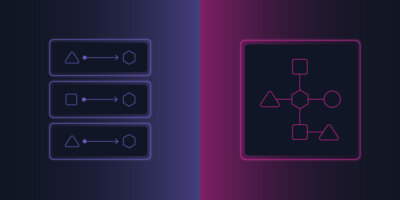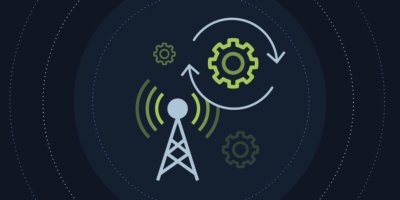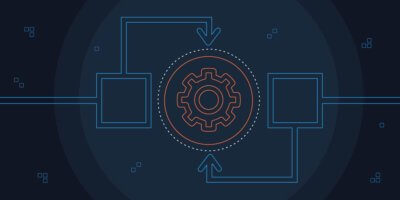Automation and orchestration are two words that have been around for a while, yet they often can still be misunderstood. In fact, just a couple years ago, we shared a blog outlining the difference between the two to help clarify the focus and roles of both technology types. While the fundamentals covered have not changed, there are some evolutions and nuances that have emerged over the past few years as more and more organizations are increasing their adoption of automation and orchestration tools.
This biggest difference is how these terms apply to today’s multi-domain networks. To help clarify further, here’s some insight into what we’ve seen evolve.
The Evolution of Automation & Orchestration from Single Domain Focus into Multi-Domain
To help set the stage, here’s how we originally defined network automation and orchestration:
Network automation focuses on the ability to perform automatic configuration, provisioning, management, and testing of network devices.
Orchestration focuses on more narrow coordination hardware and software components to activate a network service of application within a single domain.
Since then, things have changed. Organizations have evolved, teams have evolved, the network has evolved, technologies have evolved, and even the way we think about managing our networks have evolved.
Perhaps one of the biggest things I’ve seen evolve is the growing importance of multi-domain service orchestration (MDSO), originally referred to as “Orchestrator of Orchestrators” in 2020. Now, the network spans more domains than ever. In fact, organizations have 11+ different tools and controllers over multiple domains such as data center, WAN, DevOps, cloud, etc. according to Gartner. With this new approach, orchestration has evolved from initially being very focused on the coordination of a linear set of steps within a domain to instantiate a service or application, to now being responsible for coordinating across multiple domains to provision end-to-end, multi-domain services and applications.
The challenge for organizations implementing MDSO is that the requirements to perform effectively at multi-domain orchestration are very different than those required for single domain orchestration. For example, in reviewing the performance data of more than 1 billion service orchestration transactions of our customers, using the Itential Automation Platform from last year, our architects discovered that the volume and frequency of interactions between the MDSO system and east/west integrations (inventory, management systems, OSS, etc.) was exponentially higher than the volume and speed of transactions to the domain controllers. This meant that the capabilities of the MDSO layer need to be optimized for these types of east/west interactions, while at the same time be flexible enough to effectively integrate with a wide number of southbound domain orchestrators, controllers, and automation platforms.
Redefining Network Automation & Orchestration for Today’s Multi-Domain Networks
Given the changes experienced over the years, it’s important to take a step back and determine how this evolves our definitions of network automation and orchestration, including the addition of a new definition.
In today’s multi-domain environment, it’s time to redefine network automation and orchestration.
Network Automation
Network automation remains to be the capability to perform automated (no human intervention required) configuration, provisioning, management, and testing of network functions and network systems. Network automation is most commonly performed within a single network technology domain.
Network Orchestration
Service orchestration addresses coordination of hardware and software components to activate a network service or application within a single domain.
Multi-Domain Service Orchestration
Multi-domain service orchestration addresses the coordination of service orchestration AND network automation activities required to activate and manage a multi-domain network service or application.
As we all know in the world of technology, these definitions will continue to evolve overtime. In two years, there may be yet another iteration of this blog, and I’m excited to see where the industry goes in that time.
To learn more about Itential can help overcome the major challenges faced when implementing multi-domain service orchestration, check out this white paper.





